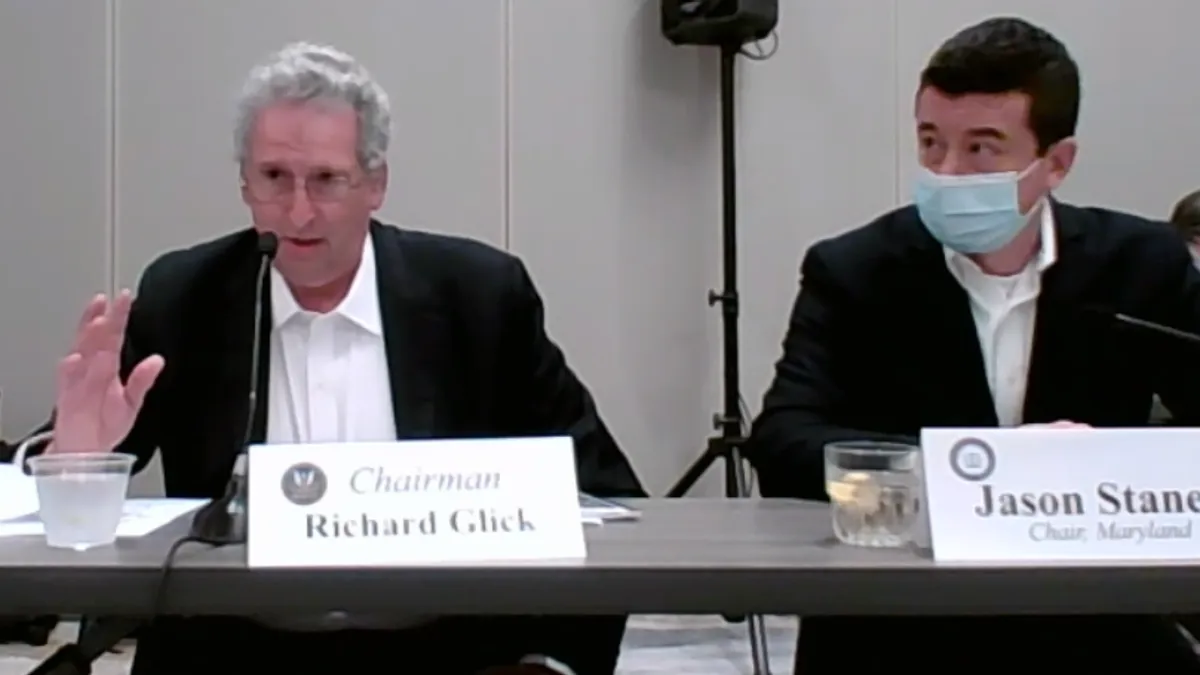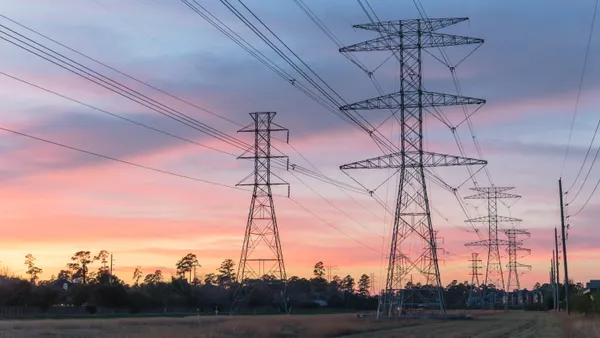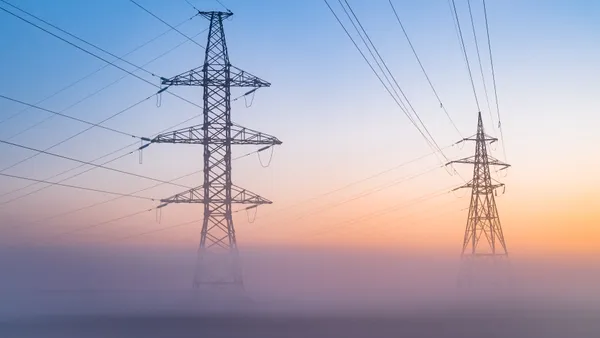Dive Brief:
-
Federal and state utility regulators on Wednesday explored options for improving the process of planning interregional transmission lines and allocating their costs, including the possibility of requiring minimum amounts of transfer capacity between regions.
-
However, utility commissioners from the Southeast and West balked at the idea of the Federal Energy Regulatory Commission requiring specific transfer levels for non-regional transmission organizations, according to comments at the fourth meeting of the FERC and National Association of Regulatory Utility Commissioners transmission task force.
-
Even so, task force members said interregional transmission facilities can provide a range of benefits. “There is an overwhelming and growing body of evidence that materially expanding import and export capabilities among the regions will produce immense economic, reliability and public policy benefits,” Andrew French, Kansas Corporation Commission commissioner, said.
Dive Insight:
The experience of Winter Storm Uri hung over the task force’s discussion at the meeting in San Diego. During that storm in February 2021, frigid weather blanketed the central United States, knocking out power plants from Texas to Minnesota.
The Electric Reliability Council of Texas, which is largely cut off from neighboring grid systems to avoid FERC oversight, ordered days of rolling blackouts during which about 250 people died and more than $195 billion in property damage occurred.
Meanwhile, the Midcontinent Independent System Operator and the Southwest Power Pool, which also lost power plants during the cold snap, largely avoided planned blackouts because they were able to import power from other areas, including the PJM Interconnection, according to a report by FERC and the North American Electricity Reliability Corp.
“There's a lot of benefits in interregional transmission, but reliability and public safety is one of them,” FERC Chairman Richard Glick said at the meeting, adding that processes established in FERC Order 1000, a key decision on transmission planning and cost allocation, have failed to spur any interregional projects.
Noting there is no requirement for regions to be able to transfer power between themselves, FERC Commissioner Willie Phillips warned that extreme weather doesn’t respect grid boundaries.
“We’re just crossing our fingers, hoping that nothing terrible happens again,” Phillips said. “This all comes down to, for me, reliability, and reliability is about risk. So we all need to ask ourselves, what is our risk tolerance?”
It may make sense to initially focus on setting minimum interregional capacity transfer requirements instead of a broader overhaul of interregional planning and cost allocation rules, according to FERC Commissioner Allison Clements.
Work on that specific issue could provide a platform for developing processes and methodologies that could later be used for other interregional projects, Clements said.
Focusing on interregional transfer capability simplifies the cost-benefit and cost-allocation analysis, which could be valuable in getting additional interregional transfer capacity built relatively quickly, according to Arkansas Public Service Commission Chairman Ted Thomas.
“We're in a foot race between implementing this solution and the next time we get hit,” Thomas said. “If somebody gets hit and we didn't act, it’s on us … Let’s get started.”
If a region doesn’t want to move ahead on adding transfer capability, it’s their choice, according to Thomas. “When you do that, you’re picking up a pair of dice and you’re hoping,” he said.
Regulators from non-RTO states were cautious about setting specific transfer capacity requirements.
FERC should allow for flexibility and avoid a top-down approach in any minimum transfer capacity requirement to reflect regional differences, according to North Carolina Utilities Commission Commissioner Kimberly Duffley, who represents an area without RTOs.
Non-RTO states shouldn’t be burdened by a transfer capacity requirement that would force them to build unnecessary transmission, Duffley said.
There are already pathways for interested parties to discuss interregional projects, Duffley said.
Setting a minimum transfer requirement could lead to “stop gap” solutions that undercut the economic case for larger interregional transmission projects, according to Riley Allen, Vermont Public Utility Commission commissioner.
Some regulators suggest setting interregional transfer requirements could be done through a potential NERC reliability standard.
Based on comments from task force members, Glick said there appears to be “significant support” for doing more on interregional transmission. He cautioned that allowing differences in approaches between regions could create barriers to getting new transmission projects developed.
So far this year, FERC has proposed overhauling its regional transmission planning and cost allocation rules as well as requirements for interconnecting generators to the grid.
FERC issued those proposals after the FERC-NARUC task force discussed the topics.














